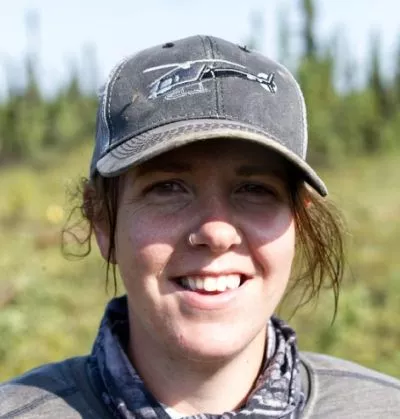NRESi Colloquium – Legislating a legacy of disturbance: disposition rights along linear features prevents caribou habitat restoration – Jesse Tigner and Katherine Wolfenden

In Canada, declines of boreal caribou populations are driven in part by linear habitat disturbances (lines) associated with human land uses. Roads, pipelines, transmission and utility lines,and seismic lines all dissolve spatial separation between caribou and their predators and alternative prey- and notably, increase wolf movement speed, predation efficiency, and density at broad spatial scales. Linear restoration, or active closure and recovery of lines, is a primary management tool to restore caribou habitat. To that end, a significant effort has been allocated to identifying restoration targets (e.g., line locations and recovery state) and treatments (e.g., actions effective at dissuading animal use and re-growing trees). However, far less attention has been given to identifying the legal status of lines.Most caribou habitat is overlapped by a variety of land users and uses, and in many cases, those uses have been granted a suite of long-term rights through tenure and disposition permitting processes.

In Canada, declines of boreal caribou populations are driven in part by linear habitat disturbances (lines) associated with human land uses. Roads, pipelines, transmission and utility lines,and seismic lines all dissolve spatial separation between caribou and their predators and alternative prey- and notably, increase wolf movement speed, predation efficiency, and density at broad spatial scales. Linear restoration, or active closure and recovery of lines, is a primary management tool to restore caribou habitat. To that end, a significant effort has been allocated to identifying restoration targets (e.g., line locations and recovery state) and treatments (e.g., actions effective at dissuading animal use and re-growing trees). However, far less attention has been given to identifying the legal status of lines.Most caribou habitat is overlapped by a variety of land users and uses, and in many cases, those uses have been granted a suite of long-term rights through tenure and disposition permitting processes.
We present a case study from the six delineated boreal caribou ranges in northeast British Columbia (NE BC) showing the ramifications to habitat restoration and restoration planning of active tenures and dispositions attached to linear features related to the oil and gas and forestry sectors, and public utilities and infrastructure. We show that a significant proportion of NE BC ranges are covered by surface dispositions, ranging from a low of 16.61% in the Parker Range to 49.92% in the Chinchaga, and additional space is tenured for further possible exploration. We discuss challenges and opportunities of identifying active dispositions, planning large scale restoration activities in “highly permitted landscapes”, and streamlining roadblocks, to set the stage for success based on four years of restoration activities in the region.
The Natural Resources & Environmental Studies Institute (NRESi) at UNBC hosts a weekly lecture series at the Prince George campus. Anyone from the university or wider community with interest in the topic area is welcome to attend. Presentations are also made available to remote participants through Zoom Webinar. Go to http://www.unbc.ca/nres-institute/colloquium-webcasts to view the presentation remotely.
Past NRESi colloquium presentations and special lectures can be viewed on our video archive, available here.